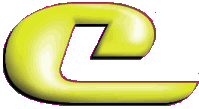 Rounding up and down
Rounding up and down
You can check here if rounding a number up and down is clear to you.
Take into account the notes appearing in the exercise about the number
of decimal figures that are accepted as correct in the answer.Whenever the problem itself shows this number, you can decide between:
- to put additional figures (provided they are correct). For instance, if you are asked for 3 figures, enter 3.36589.
- to round up or down. For instance, if two correct figures are needed, look at the third figure: if it is 5 or greater round up the second one to the immediate value, otherwise remove all the figures to the right of the second one.

Sometimes you can get an exercise that is omitting the information related to the required accuracy for one or more questions. Well, use your common sense. You are being asked to enter some value that should be accurate enough to make sense and not to lack information relevant to the question. If you have to compute the probability of a very rare event, you have to provide with more decimals than for a medium probability (such as something around 0.5). In general, our perception of the environment is not very precise, and only two or three figures are usually significant to us (for instance, height or weight of a person). However, the problem is likely intended to appraise your ability to obtain a right solution, and you will be better assessed if you are able to give quite a lot of correct figures. although five figures could be a sensible choice to get right most of the times.




